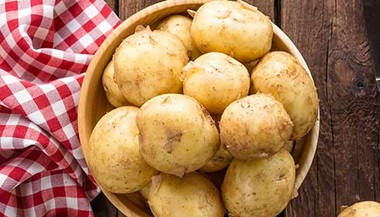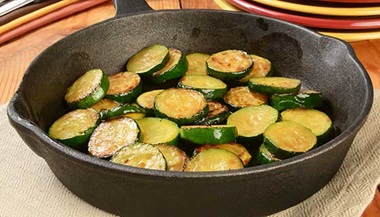Veggie Burgers: Health Tips from a Dietitian
Veggie burgers can be tasty alternatives to traditional beef. They’re not all created equal in terms of ingredients and nutrition, so reading the nutrition information carefully is important.
Registered dietitian Sarah Wechsler of Johns Hopkins Health System’s Food and Culinary Services explains what to look for in veggie burgers and how to make your own.
What’s in a veggie burger?
Veggie burger ingredients vary. Some veggie burgers use vegetable-sourced protein to imitate meat’s texture. Others are simply patties that don’t pretend to be anything like a beef burger.
Commercially available veggie burgers may contain:
- Vegetable protein (derived from beans, soy, peas or other source)
- Other vegetables such as carrots, squash, mushrooms, peppers, beets, water chestnuts or onions
- Seeds such as flax or sesame seeds
- Grains such as oats, wheat or rice
- Fillers such as methylcellulose (a type of fiber that is safe to eat)
- Salt and other spices and flavorings
Consumers may choose a particular veggie burger based on taste preferences or to avoid certain ingredients they may be allergic to, such as soy.
Nutritional Benefits of Veggie Burgers
Wechsler says, like all food, the nutritional benefits of veggie burgers are based on their ingredients. “There are many different types of veggie burgers, and the nutrition is shaped by the plant foods used. It is possible to get a lot of the nutrition, and even flavor, of a beef burger in one made from plants.”
Beef vs. Veggie Burger
A veggie burger, when compared with a beef burger, may contain:
- More fiber
- Fewer calories
- Less saturated fat
Tips for Choosing and Eating Veggie Burgers
- Read labels. Wechsler stresses the importance of checking the label of store-purchased veggie burgers for ingredients since extra fat and salt may be added to amp up the flavor. “Make sure your veggie burgers have fewer than 5 grams of saturated fat and, ideally, less than 400 grams of sodium.”
- Select fresh vegetable toppings. “There’s the classic lettuce, tomato and onion, or you can try something new by adding bell pepper, mushrooms or avocado,” she says.
- Watch extra salt, saturated fat and sugar by avoiding or reducing add-ons such as ketchup, cheese and mayonnaise. Use as little as possible, or opt for spreads like mustard or avocado.
Are veggie burgers high in protein?
Some are, especially the kind made to mimic the taste and texture of a meat-based burger. Wechsler says if you are looking for a protein-rich meal, there are plenty of veggie burgers with protein derived from legumes, such as soy, peas or beans.
“A good rule of thumb when avoiding or replacing any food group from the diet is make sure you’re getting key nutrients found in that food group from another source,” Wechsler explains. “In this case, if enjoying a veggie burger in place of meat, you’d want similar levels of protein, iron and vitamin B12. Look for veggie burgers with at least 4 grams of protein per ounce.
“Some veggie burgers have plenty of nutritional benefits and taste great, but may be low in protein. You can make up the difference with protein-rich sides such as beans and legumes,” she says.
Are veggie burgers highly processed food?
They can be. Highly processed foods are those in which the raw ingredients (grains, vegetables or proteins) undergo multiple mechanical processes. These can include washing, grinding, heating, dehydration, mixing, extrusion (making into a paste that is squeezed into shapes) or other manufacturing steps. Some highly processed foods have artificial flavors and colors, added sugar or salt, and preservatives.
“Highly processed foods, in general, are food sources that seem to be emerging more and more with health concerns,” Wechsler notes.
“Overprocessing can remove some of the nutritional benefits of whole foods. Processed foods are not inherently bad, but require more work to read labels and understand what you’re getting.
“Look for veggie burgers with whole food ingredients such as tofu or tempeh, over those with isolated or hydrolyzed protein,” she suggests. “Better yet, make them yourself!” (See recipe below.)
Variety in Veggie Burgers

Veggie burgers have grown in popularity over the past three decades. Wechsler points out that there are more choices hitting the market all the time, and that newer meatless burgers appeal to meat eaters more than earlier versions.
“Now, meat eaters and omnivores have vegan options that can supplant meat in terms of nutrition, and potentially have other benefits, such as a positive environmental impact.”
Variety is key to a healthy diet, and people can try different veggie burgers to suit their preferences and dietary goals. Wechsler says, “When you are craving a burger, try different kinds to get a good variety of tastes and balanced nutrition.”
Black Bean Veggie Burger Recipe
These delicious, flavorful, plant-based burgers are made of ingredients you can find at the grocery store.
“They’re great paired with guacamole or traditional burger toppings,” says Wechsler, who adds that these burgers are served to patients and visitors at Johns Hopkins hospitals and facilities.
Makes six burgers.
Ingredients
- 5 cups rolled oats
- 1 medium bell pepper, chopped
- 1 cup shredded carrots
- 2 Tbsp vegetable oil
- 1 Tbsp canned diced jalapeno peppers
- 2 garlic cloves, peeled
- 1 tsp ground cumin
- 1 tsp ground coriander
- ¾ tsp Spanish paprika
- ⅛ tsp kosher salt
- ½ tsp ground black pepper
- 2 cans black beans, rinsed and drained
- 6 hamburger buns
Directions
- Preheat oven to 300 degrees F.
- Line a large baking pan with parchment paper. Set aside.
- In the bowl of a food processor, place all the ingredients except the black beans. Pulse for 20 seconds, scraping down the sides of the bowl as necessary until the ingredients are finely chopped but still have some texture.
- Add all but 1 cup of beans and continue to pulse for 30–60 seconds until the beans start to break down and the ingredients begin to hold together. Transfer mixture to a mixing bowl.
- Add remaining beans, and stir by hand. Form mixture into 7-ounce patties, and place on prepared baking sheet.
- Bake for 40 to 45 minutes or until edges become crisp and patties start to hold together. Allow patties to cool on baking sheet for 10 minutes.
Nutrition facts per one 200-gram patty: 230 calories, 36 grams of carbohydrates (including 11 grams of fiber), 10 grams of protein, 6 grams of fat.






